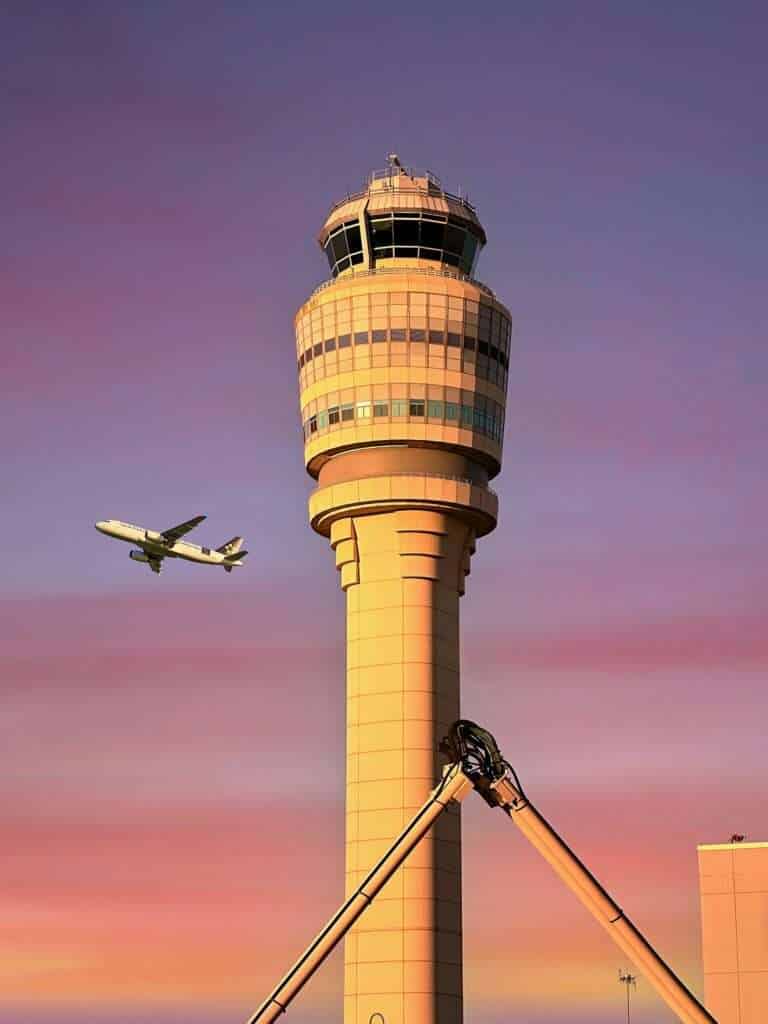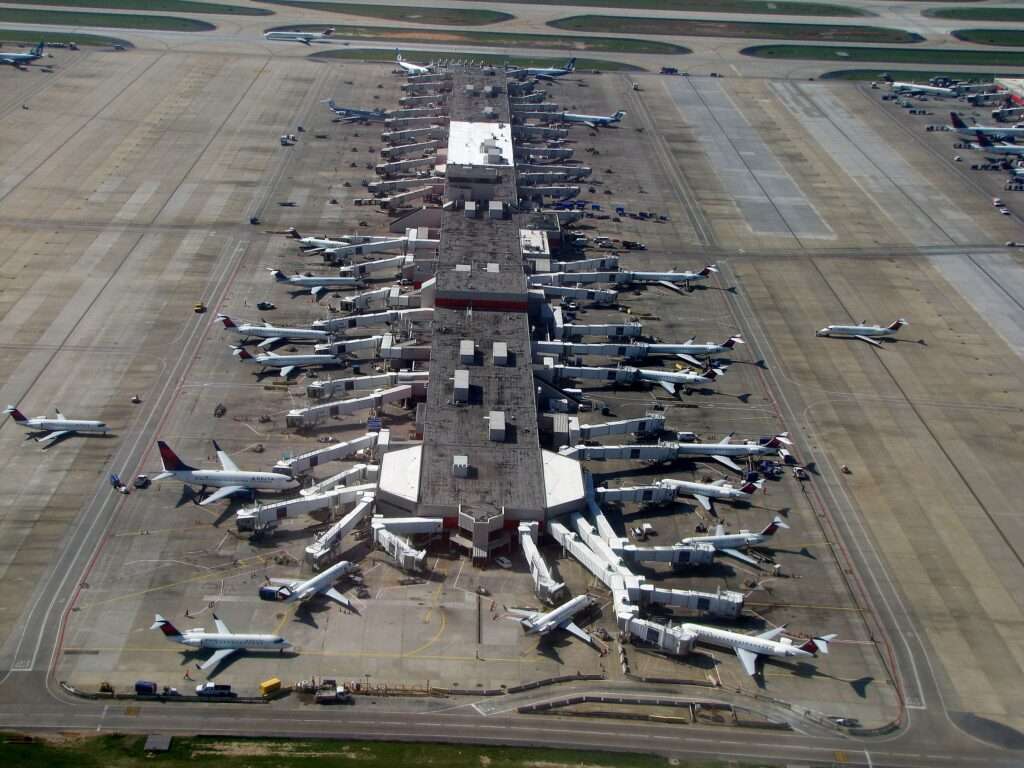Hartsfield-Jackson Atlanta International Airport (ATL) isn’t just a transportation hub; it’s a testament to Atlanta’s rise as a global city.
Its story, spanning over eight decades, is interwoven with innovation, ambition, and the ever-evolving needs of the aviation industry.
Early Days: Taking Flight (1926-1940s)
In 1925, Atlanta’s Chamber of Commerce embarked on a mission to establish a municipal airport.
The chosen site: a 500-acre cow pasture south of the city.
A year later, Candler Field, named after Atlanta’s prominent Coca-Cola family, opened its doors with a single dirt runway.
Eastern Air Lines, a fledgling carrier, saw Candler Field’s potential and began scheduled passenger service in 1926.
The 1930s witnessed the airport’s first expansion, driven by the burgeoning airmail industry.
A paved runway and terminal building marked a significant upgrade. The growing importance of air travel during World War II further propelled Candler Field’s development.
The federal government funded extensions to the runway and construction of additional hangars to accommodate military training flights.
Post-War Boom: The Birth of Hartsfield (1940s-1960s)
Following the war, commercial aviation experienced a boom. Eastern Air Lines, recognizing Atlanta’s strategic location, established a major hub at Candler Field.
In 1948, the airport was renamed after William B. Hartsfield, the Atlanta mayor who championed its creation.
The 1950s saw a surge in passenger traffic, necessitating further expansion. A new terminal building, designed to handle the jet age, opened in 1961.
This era also saw the introduction of the first international flights, solidifying Atlanta’s position as a major air travel hub.
The Maynard Jackson Era and the Rise of a Global Giant (1960s-1990s)

The election of Maynard Jackson as Atlanta’s first African-American mayor in 1970 marked a turning point for the airport.
Jackson recognized the airport’s potential as an economic engine for the city and championed its further development.
The airport’s name was officially changed to Hartsfield-Jackson Atlanta International Airport in 1985 to honor both mayors.
The 1970s and 1980s were a period of rapid expansion.
New terminals were constructed, the runway system was expanded, and the innovative “people mover” system, the Plane Train, was introduced to connect the sprawling complex.
Delta Air Lines, attracted by Atlanta‘s central location, began establishing its hub at ATL in the 1970s, further solidifying the airport’s dominance.
By the 1990s, Hartsfield-Jackson had surpassed Chicago O’Hare to become the world’s busiest airport in terms of passenger traffic, a title it has held for over two decades.
Challenges and Continual Innovation (1990s-Present)

The phenomenal growth also brought challenges. Passenger congestion, delays, and aging infrastructure became concerns.
Hartsfield-Jackson responded with a series of modernization projects, including the expansion of terminals, the addition of new concourses, and the implementation of a sophisticated baggage handling system.
Security became a top priority after the 9/11 attacks.
The airport implemented stringent security measures while striving to maintain passenger flow.
Sustainability also became a focus, with initiatives to reduce the airport’s environmental footprint.
Hartsfield-Jackson Atlanta International Airport in the 21st Century

Today, Hartsfield-Jackson is a global aviation giant, serving over 100 million passengers annually.
It boasts a network of over 150 domestic and 78 international destinations, connecting Atlanta to virtually every corner of the world.
The airport is a major economic driver for the city, generating billions of dollars in revenue and supporting tens of thousands of jobs.
Looking ahead, Hartsfield-Jackson faces the challenge of maintaining its position as a global leader in an ever-evolving aviation landscape.
Technological advancements, such as autonomous vehicles and electric vertical take-off and landing (eVTOL) aircraft, may necessitate further adaptation.
However, with its history of innovation and commitment to growth, Hartsfield-Jackson is well-positioned to navigate the future and remain a vital transportation hub for decades to come.

Click the banner to subscribe to our weekly newsleter.

Click the photo to join our WhatsApp channel so then you can stay up to date with everything going on in the aviation industry!








